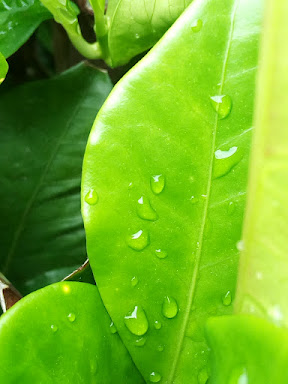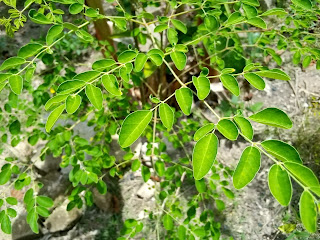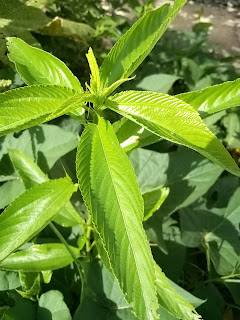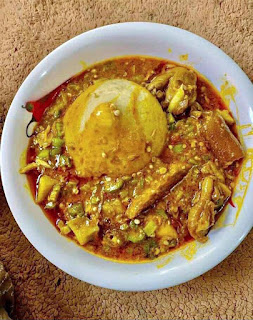Ever wondered where you could get useful information and discoveries about the various ways in which the Ewes use herbs for medicinal purposes among other uses of the various plants in the areas? This post comes just at the right time to provide that very information and education that you desperately desire in detail.
The plants are listed with their respective English names and the local names by which they are called in the Ewe Language in addition to the uses and applications of each of them.
Cassava plant
Ewe name: Agbeli ti
Cassava happens to be one of the plants that is found in every corner of the towns and villages in the Volta Region. The simple reason being that it is easy to get the stem cutting and it grows in all types of soil and survives under all weather conditions. This makes it one of the most widely cultivated crops in the region even though not all who cultivate it do that in large plantations but mostly backyards definitely have cassava in there to make the farm complete.
Uses
The uses of the plant are a lot and some include: boiling it for food, biscuit production using the starch extracted from the tubers, tapioca production using the starch extracted from the tubers, cassava dough production, gari, kakro. The uses are a lot such that even the cassava peels is not thrown away but dried and sold to farmers as feed for goats.
The cassava leaves are also used in wrapping a popular local food known as 'egblen'.
Boiled cassava
After uprooting a mature cassava, it is peeled, washed properly and boiled in clean water. It boils for long which takes averagely more than an hour to cook well. It is then strained to get rid of the water. The boiled cassava is consumed with any vegetable stew to create a balanced meal or any kind of stew or even soup available. The energy it gives after consumption makes it a popular choice for farmers especially when the work on the farm is weeding that demands great energy. In the farm where stew is not always available when it isn't carried along, the boiled cassava is consumed with dry coconut and it taste so nice like milk mixture.
Cassava can be put in a low fire which mostly is either charcoal or firewood fire and allowed to stay in for some time and then the covering is removed and taken with coconut.
Fufu
In parts of the country where fufu is consumed so much, the main food component is cassava. The tuber for this use is transported from farms to various markets so restaurants and households can be supplied with cassava so they can enjoy fufu without stress.
Gari
The villages mostly are very familiar with this food made from fresh cassava dough. The food has a high shelf life because it is made such that the moisture content is completely out. Gari is used for soakings, garifortor, pinor etc. Infact, after grinding the cassava into a dough, the water is squized out of it and the less moisturized dough is prepared and finally roasted and it is in this process that the moisture is completely removed given it a long shelf life. It is a characteristic feature of it that makes it a part of the luggage of students going to boarding house.
Cocoyam
Ewe name: Makani
Cocoyam is mostly consumed boiled and taken with some stew or soup. Another very interesting use is in porridge preparation.
The cocoyam leaf known as 'kontonmire' is used for vegetable stews.
How to prepare cocoyam porridge (makani dzorgbor)
- Peel cocoyam and wash in clean water.
- Cut in small sizes to aid the process later in the preparation stage.
- Boil until it becomes very soft.
- Add salt to taste.
- Use a ladle or banku stick to break the slices into very small pieces. When this is done properly, the porridge at this stage begins to thicken and palm oil is added. Others also add some amount of ground pepper and fish powder to taste.
- Allow to cook very well and enjoy.
Talinum plant
Ewe name: Yevu gboma
The plant grows in humid areas and it is found commonly in bushes and farms. The women mostly cultivate the plants by just uprooting them and when it is sent home, the leaves are removed proper and the root with the stem is thrown away. It is the job of some women who go deep into farms and forests to cultivate the leaves and sell in the market.
After cultivation, the leaves are dried on the ground in a room to reduce the moisture content. It is used to prepare stew and soup.
Lume
It is used basically for medicinal purposes like the treatment of headache.
Note: This is only a description of how it is used.
The leaves are boiled in hot water and drunk to cure headache. Even at times, the leaves can be eaten raw after washing them in clean water.
Dandelion leaves
Ewe name: Anwoto
Used for vegetable stews and medicinal purposes. Formerly many didn't know about the health benefits of this plant but as awareness creation went all, a lot more people got to learn using it. For medicinal uses, it can be boiled and the water is drunk by adding other stuffs or solely the water.
Pineapple plant
Ewe name: Atortorti
Consumed as a fruit. Pineapple isn't one of those crops common in the region but may only be found in places where it is farmed commercially. Folks who farms do try to cultivate it but this is very rare. It is nowadays used to prepare fruit juices of different kinds but not so popular.
Neem tree
Ewe name: Lilinti
This is one of the trees used for its medicinal applications. Some of the indications for which the plant and especially the leaves are used is for the treatment of malaria, headache, treating wounds and other applications. Farmers in cases where there is lack of access to pesticides at times use the leaves by grinding them to draw them with water and it is poured on crops to prevent attack from pesticides.
To treat for instance headache, the just a small amount of the leaves can be washed, poured in a bowl with a little water added, it is prepared as if washing it to dissolve the content of the leaves into the water. The water which at his stage has a characteristic green colour is filtered and drunk. The applications of this particular plant is enormous.
Palm nut tree
Ewe name: Edeti
Palm nut tree provides modes of income for people who know how to make a living out of this asset. Women prepare palm oil from the palm fruit, the palm fruits are used to prepare soup known as palm nut soup, in Twi as abenkwan, in Ewe as 'dedetsi'.
The palm kernel is used to prepare palm kernel oil and even the shell of the nuts is used as a fuel.
The palm branches are used to weave basket and the fronds also used to make sweeping broom.
The dried flowers of the palm nut tree is burnt to drive away mosquitoes. This was the was of driving mosquitoes when the elderly and the young share stories before the introduction of mosquito coils, sprays and nets.
Plantain tree
Ewe name: Abladzoti
Pawpaw tree
Ewe name: adibati
Coconut tree
Ewe name: Eneti
The fresh coconut fruits are sold all over for people to buy and some are even sent to other regions where it is not deficient. The dried coconut is what is used for different purposes largely.
The dried nuts are used in making toffee, coconut oil, coconut candy, the chaff is feed for fowls or birds. The coconut branches are also used to make sweeping brooms which are of two kinds; the standing broom and the bending broom.
Moringa tree
Ewe name: Yevuti
Used to prepare soups and this is mostly with conjunction with okro.
Also, due to its medicinal and health benefits, it is used to prepare tea and this is done by either boiling the fresh leaves and using the water or alternatively by drying the leaves and then pouring hot water on it and leaving it for some minutes and then strain the water for use.
To use the fresh leaves for okro soup, the leaves are washed and cut into smaller bits using a knife and added to cut okro for the soup or the okro stew. Eating moringa happens to be a healthy option for which reason the people like to include it in meals.
How is the moringa leaves gotten?
In the villages and particularly households where they uses woven coconut branches for fencing, they make sure to include the moringa cuttings as supporting sticks in the fence and as times goes on, the leaves grow and when it is needed, it is just plucked from the fence tree.
Gbitsavi
This is used to prepare tea and soups. It is blended or grounded and strained before inclusion in either the soup or tea. Used because of its nutritional value.
Maize plant
Ewe name: Ebliti
Jute leaves
Ewe name: Ademe leaves
It is used as medicine for cough by washing the leaves well and grinding well. The juice is strained and drunk or a little sugar is added at times.





















Great work dear . Pls what's the ewe name for kikar plant ?
ReplyDeleteWell done
ReplyDeleteWhat is the Botanical name for the herb Zutame
ReplyDeleteWhat IS THE EWE NAME OF THYME
ReplyDeleteThank you very much more grease to your elbows
ReplyDeletePlease what is English name of wunsikun? Leaf
ReplyDelete